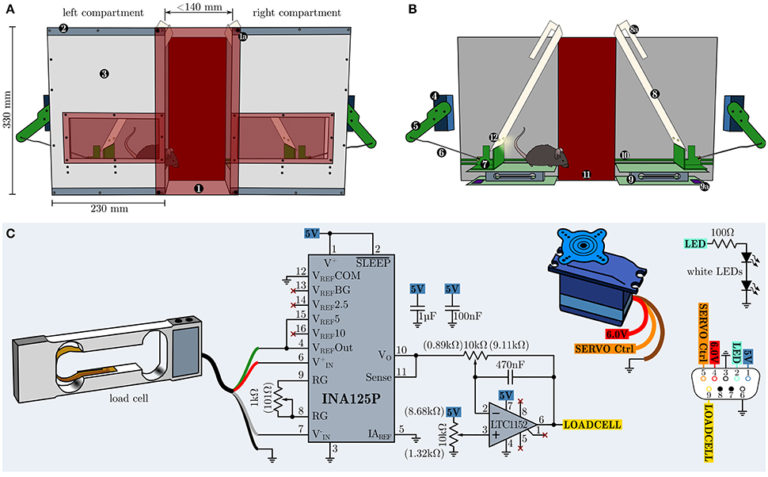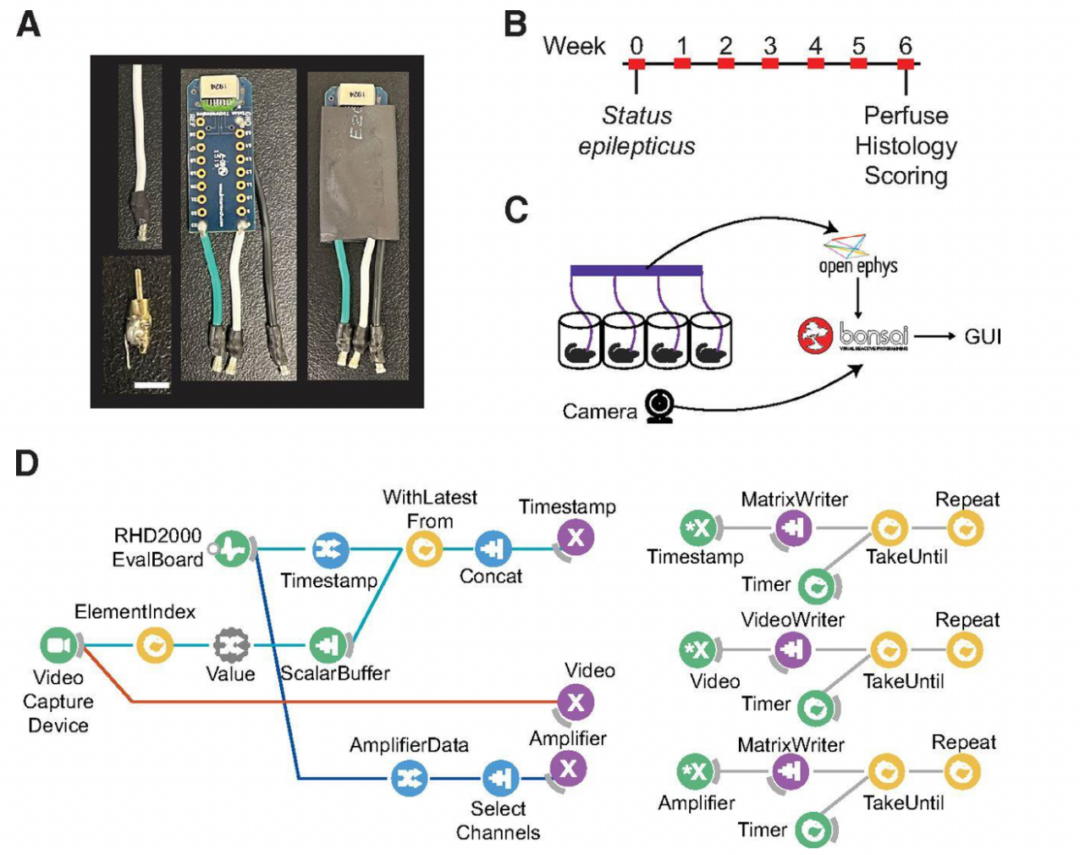Andreas Genewsky, from the Max-Planck Institute of Psychiatry, has generously shared the following regarding his Moving Wall Box task and associated apparatus. “Typicallly, behavioral paradigms which aim to asses active vs. passive fear responses, involve the repeated application of noxius stimuli like electric foot shocks (step-down avoidance, step-through avoidance, shuttle-box). Alternative methods to motivate the animals and ultimately induce a conflict situation which needs to be overcome often involve food and/or water deprivation. In order to repeatedly assess fear coping strategies in an emotional challenging situation without footshocks, food or water deprivation (comlying to the Reduce & Refine & Replace 3R principles), we devised a novel testing strategy, henceforward called the Moving Wall Box (MWB) task. In short, during the MWB task a mouse is repeatedly forced to jump over a small ice-filled box (10 trials, 1 min inter-trial intervals ITI), by slowly moving walls (2.3 mm/s, over 60 s), whereby the presence of the animal is automatically sensed via balances and analyzed by a microcontroller board which in turn controls the movements of the walls. The behavioral readouts are (1) the latency to reach the other compartment (high levels of behavioral inhibition lead to high latencies) and (2) the number of inter-trial shuttles per trial (low levels of behavioral inhibition lead to high levels of shuttles during the ITI). The MWB offers the possibility to conduct simultaneous in vivo electrophysiological recordings, which could be later aligned to the behavioral responses (escapes). Therefore the MWB task fosters the study of activity patterns in, e.g., optogenetically identified neurons with respect to escape responses in a highly controlled setting. To our knowledge there is no other available compatible behavioral paradigm.” This research tool was created by your colleagues. Please acknowledge the Principal Investigator, cite the article in which the tool was described, and include an RRID in the Materials and Methods of your future publications. RRID:SCR_021559 Check out projects similar to this!Moving Wall Box (MWB)


Read the paper

GitHub
Have questions? Send us an email!
Read more in their paper published in Frontiers in Behavioral Neuroscience!
Find necessary code and files on the Github repository!










